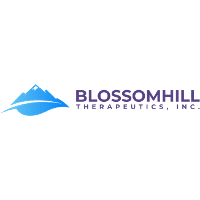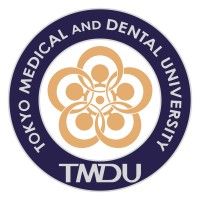预约演示
更新于:2025-05-07
CLK4
更新于:2025-05-07
基本信息
别名 CDC like kinase 4、CDC-like kinase 4、CLK4 + [1] |
简介 Dual specificity kinase acting on both serine/threonine and tyrosine-containing substrates. Phosphorylates serine- and arginine-rich (SR) proteins of the spliceosomal complex and may be a constituent of a network of regulatory mechanisms that enable SR proteins to control RNA splicing. Phosphorylates SRSF1 and SRSF3. Required for the regulation of alternative splicing of MAPT/TAU. Regulates the alternative splicing of tissue factor (F3) pre-mRNA in endothelial cells. |
关联
9
项与 CLK4 相关的药物作用机制 CLK1 抑制剂 [+2] |
非在研适应症- |
最高研发阶段临床1期 |
首次获批国家/地区- |
首次获批日期1800-01-20 |
作用机制 CLK1 抑制剂 [+2] |
在研适应症 |
非在研适应症- |
最高研发阶段临床前 |
首次获批国家/地区- |
首次获批日期1800-01-20 |
作用机制 CLK抑制剂 [+1] |
在研适应症 |
非在研适应症- |
最高研发阶段临床前 |
首次获批国家/地区- |
首次获批日期1800-01-20 |
1
项与 CLK4 相关的临床试验NCT06501196
A Phase 1/1b Open-Label, Dose Escalation, First-in- Human Study to Evaluate the Safety, Tolerability, Pharmacokinetics, and Preliminary Anti-leukemic Activity of the Orally Available CDC-Like Kinase (CLK) Inhibitor, BH-30236, in Adults With Relapsed or Refractory Acute Myelogenous Leukemia (R/R AML) or Higher-Risk Myelodysplastic Syndrome (HR-MDS)
Study BH-30236-01 is a first-in-human (FIH), Phase 1/1b, open-label, dose escalation and expansion study in participants with relapsed/refractory acute myelogenous leukemia (R/R AML) or higher-risk myelodysplastic syndrome (HR-MDS).
Phase 1 (Dose Escalation) will evaluate the safety, tolerability, pharmacokinetics (PK), pharmacodynamics (PD), and preliminary efficacy of BH-30236 administered orally. Approximately 50 participants may be enrolled in Phase 1 of the study.
Phase 1b (Dose Expansion) will follow Phase 1 to further understand the relationships among dose, exposure, toxicity, tolerability, and clinical activity. Up to 24 participants may be enrolled in Phase 1b of the study.
The dose expansion part (Phase 1b) will be followed to understand the relationships among dose, exposure, toxicity, tolerability and clinical activity. Up to 24 participants may be enrolled in Phase 1b of the study.
Phase 1 (Dose Escalation) will evaluate the safety, tolerability, pharmacokinetics (PK), pharmacodynamics (PD), and preliminary efficacy of BH-30236 administered orally. Approximately 50 participants may be enrolled in Phase 1 of the study.
Phase 1b (Dose Expansion) will follow Phase 1 to further understand the relationships among dose, exposure, toxicity, tolerability, and clinical activity. Up to 24 participants may be enrolled in Phase 1b of the study.
The dose expansion part (Phase 1b) will be followed to understand the relationships among dose, exposure, toxicity, tolerability and clinical activity. Up to 24 participants may be enrolled in Phase 1b of the study.
开始日期2024-06-19 |
100 项与 CLK4 相关的临床结果
登录后查看更多信息
100 项与 CLK4 相关的转化医学
登录后查看更多信息
0 项与 CLK4 相关的专利(医药)
登录后查看更多信息
55
项与 CLK4 相关的文献(医药)2025-05-01·Bioorganic & Medicinal Chemistry Letters
Synthesis, antibacterial and anticancer activity of azo-based and aminomethylene derivatives of cyclic β-keto sulfones
Article
作者: Virych, Pavlo A ; Volovenko, Yulian M ; Poliudov, Anton O ; Milokhov, Demyd S ; Kolomiets, Anna Y ; Shishkina, Svitlana V ; Dobrydnev, Alexey V ; Balabushko, Mykola O ; Rabotnikova, Sofiia D
2025-03-01·Chemical Biology & Drug Design
Small Molecule Inhibitors Targeting Cdc2‐Like Kinase 4: Advances, Challenges, and Opportunities
Review
作者: Wang, Jing ; Wang, Yanhai ; Jiang, Yu ; Jiang, Minggao ; Tang, Zihua
2024-06-01·Archiv der Pharmazie
N1‐Benzoylated 5‐(4‐pyridinyl)indazole‐based kinase inhibitors: Attaining haspin and Clk4 selectivity via modulation of the benzoyl substituents
Article
作者: Engel, Matthias ; Khalifa, Hend ; Abdel‐Halim, Mohammad ; Aboushady, Youssef ; Aboelfotouh, Habiba G. ; Abadi, Ashraf H. ; Abdallah, Mennatallah
4
项与 CLK4 相关的新闻(医药)2024-08-26
·精准药物
双特异性酪氨酸磷酸化调节激酶1A (DYRK1A) 是一种丝氨酸/苏氨酸激酶,属于CMGC蛋白激酶家族中的DYRK亚家族。DYRK1A已被证实能够调控Tau病理的进展,被认为是治疗阿尔茨海默病 (AD) 有前景的靶点。然而,现有的DYRK1A抑制剂因药代动力学性能欠佳、配体利用率低及选择性不足而陷入研究瓶颈,难以满足临床治疗需求。因此,开发拥有良好体内药代动力学特性和治疗潜力的新型选择性DYRK1A抑制剂已成为当务之急。针对上述问题,沈阳药科大学赵庆春课题组通过理性设计和系统的结构优化,鉴定出一种强效且选择性的DYRK1A抑制剂。相关工作以“Discovery of
ZJCK-6-46: A Potent, Selective, and Orally Available Dual-Specificity Tyrosine
Phosphorylation-Regulated Kinase 1A Inhibitor for the Treatment of Alzheimer’s
Disease”为题发表在Journal of Medicinal
Chemistry期刊上 (J. Med. Chem. 2024, 67, 15, 12571–12600)【1】。
DYRK1A具有典型的蛋白激酶折叠构象,其ATP结合口袋呈裂隙状,主要由α螺旋组成的大亚域和以β折叠为主的小亚域构成。Gourdain等人[2]发现的双芳基-氮杂吲哚DYRK1A抑制剂效果显著,但结构中的酚羟基限制了体内应用。Chaikuad等人[3]后来发现了具有极高亲和力的甲基9-苯胺噻唑并[5,4-f]喹唑啉-2-甲酰亚胺酸酯 (EHT) 系列抑制剂,结构中的嘧啶环与酶结合口袋匹配良好。基于这些发现,研究者将1H-吡咯[2,3-b]吡啶与嘧啶片段融合,设计得到具有新型骨架的DYRK1A抑制剂 (图1A)。随后,作者通过配体亲脂效率 (LLE) 作为平衡药效和ADME性质的标准,筛选得到了3个潜在的候选物12、26和29。随后,在两种与DYRK1A具有同源性的激酶细胞周期蛋白依赖性激酶9 (CDK9) 和糖原合酶激酶-3β (GSK-3β) 上初步探讨了其激酶选择性,并根据三种蛋白结构中Leu241残基的取向不同,通过引入甲基作为位阻来进一步提高激酶的选择性,得到化合物31-33 (图1B)。
图1:(A) 新型DYRK1A抑制剂的合理设计与发现;(B) 化合物12、26和29及其相应的甲基取代衍生物31–33的结构、cLog P值、DYRK1A、CDK9和GSK-3β酶抑制活性。
在药物发现过程中,先导化合物的代谢稳定性是影响其类药性能的关键因素。因此,作者进一步评估了化合物31、32和33的人肝微粒体 (HLM) 和人血浆稳定性。结果表明,这些化合物都具有较好的人血浆稳定性,其中,化合物31和32在HLM中表现出适度的代谢,而化合物33在HLM中易发生代谢。随后,作者评估了这些化合物体外的人血浆蛋白结合率、血脑屏障通透性和细胞通透性,结果显示,这些化合物具有较高的血浆蛋白结合率和中等的细胞通透性,但只有化合物32具有较高的血脑屏障通透性。于是,作者选取化合物32进一步探索其对细胞色素 (CYP) P450酶的抑制能力,发现其对CYP2C9和CYP2C19具有较强的抑制活性,提示化合物32与这两类酶催化的代谢药物之间存在DDIs的潜在风险。同时,在对215种蛋白激酶进行选择性筛选时,发现化合物32 仅对DYRK家族和高同源性CLK家族激酶具有较高的抑制率,具有相对较高的激酶选择性 (图2)。
图2:(A) 激酶谱分析;(B) 化合物32在DYRKs和CLKs家族IC50值得测定。
在完成苗头化合物的选择和体外ADME特性评价后,作者在Tau (P301L) 293T和SHSY5Y这两种Tau蛋白高表达的细胞模型上,评价了化合物抑制Tau磷酸化的能力。Western bolting检测、荧光成像分析和细胞热稳定迁移实验表明化合物32可以直接作用于细胞中的DYPK1A,并显著抑制其介导的Tau的磷酸化 (图3)。随后,作者在Sprague-Dawley大鼠中评价化合物32的药代动性质以及血脑屏障通透性,结果显示,化合物32显示出可接受的分布、半衰期和平均驻留时间以及中等的脑组织/血浆分配系数 (Kp(brain/plasma)),表明它可以穿过血脑屏障并在大脑中积累。同时,小鼠急性毒性实验表明,单次口服给药剂量高达500 mg/kg时,未导致小鼠死亡,也没有引起体重或主要器官重量的显著变化。
图3:化合物32对Tau (P301L) 293T细胞 (A) 和SH-SY5Y细胞 (B)中p-Tau Thr212/总Tau比率的影响;(C) 化合物32对Tau (P301L) 293T细胞中活性P301L-hTau单体表达的影响; (D)SH-SY5Y细胞中化合物32处理后DYRK1A的蛋白稳定性。
最后,为评估化合物32在体内抑制Tau磷酸化的潜力,研究者建立了Okadaic acid (OA) 诱导的AD小鼠模型,通过OA 引发认知功能障碍,并采用莫里斯水迷宫测试分析化合物32对学习和记忆功能障碍的改善效果。结果表明,化合物32显著改善了小鼠的认知功能障碍,其效果与剂量呈正相关。此外,化合物32显著降低了小鼠海马和颞叶皮层中p-Tau Thr212的表达,并减少了OA引起的海马神经元损伤 (图4)。这些结果表明,化合物32作为一种新型选择性DYRK1A抑制剂,具有潜力成为抗AD药物。
图4: (A) 在为期三天的可见平台预训练中,对所有小鼠的运动能力进行了评估,以排除游泳速度存在显著差异的小鼠;(B) 化合物32处理的AD小鼠在隐形平台测试中的逃避潜伏期; (C)通过Nissl染色检测小鼠海马CA1区和齿状回 (DG) 区域中Nissl阳性细胞的表达情况; (D) 通过免疫组织化学染色检测小鼠海马CA1区和DG区域中p-Tau Thr212的阳性表达情况。
总结
总之,作者通过合理的结构优化鉴定出一种有效的DYRK1A抑制剂化合物32 (ZJCK-6-46),其IC50为0.68 nM,具有良好的激酶选择性和适中的代谢稳定性。化合物32能有效穿透血脑屏障,降低Tau蛋白磷酸化,并在OA诱导的小鼠模型中显著改善认知功能,同时表现出较低的急性毒性和肝肾损伤风险。然而,它对CLK家族中的CLK1和CLK4有一定的抑制作用,并可能受到P-糖蛋白的外排影响。未来需要进一步研究其在阿尔茨海默病治疗中的应用潜力,并解决相关问题。
参考文献
【1】Chen, H.; Gao, X.; Li, X.; Yu, C.; Liu, W.;
Qiu, J.; Liu, W.; Geng, H.; Zheng, F.; Gong, H.; Xu, Z.; Jia, J.; Zhao, Q.
Discovery of ZJCK-6-46: A Potent, Selective, and Orally Available
Dual-Specificity Tyrosine Phosphorylation-Regulated Kinase 1A Inhibitor for the
Treatment of Alzheimer’s Disease. J. Med.
Chem. 2024, 67, 1234–1245. DOI: 10.1021/acs.jmedchem.1c00123.
【2】Gourdain,
S.; Dairou, J.; Denhez, C.; Bui, L. C.; Rodrigues-Lima, F.; Janel, N.; Delabar,
J. M.; Cariou, K.; Dodd, R. H. Development of DANDYs, New
3,5-Diaryl-7-azaindoles Demonstrating Potent DYRK1A Kinase Inhibitory Activity. J. Med. Chem. 2013, 56, 9569–9585. DOI:
10.1021/jm401049v.
【3】Chaikuad,
A.; Diharce, J.; Schröder, M.; Foucourt, A.; Leblond, B.; Casagrande, A.-S.;
Désiré, L.; Bonnet, P.; Knapp, S.; Besson, T. An Unusual Binding Model of the
Methyl 9-Anilinothiazolo[5,4-f] quinazoline-2-carbimidates (EHT 1610 and EHT
5372) Confers High Selectivity for Dual-Specificity Tyrosine
Phosphorylation-Regulated Kinases. J.
Med. Chem. 2016, 59,
10315–10321. DOI: 10.1021/acs.jmedchem.6b01083
声明:发表/转载本文仅仅是出于传播信息的需要,并不意味着代表本公众号观点或证实其内容的真实性。据此内容作出的任何判断,后果自负。若有侵权,告知必删!
长按关注本公众号
粉丝群/投稿/授权/广告等
请联系公众号助手
觉得本文好看,请点这里↓
临床1期
2024-04-04
·精准药物
研发进展推介、博士后招聘联系公众号(备注:单位+姓名) 2024年3月18日,李志裕教授等人在Journal of Medicinal Chemistry 上发表了题为Structure-Guided Discovery of Potent and Selective
CLK2 Inhibitors for the Treatment of Knee Osteoarthritis的文章,在这篇文章中,作者等人设计并合成了一系列高效的基于吲唑类化合物的CLK2抑制剂,其中化合物LQ23对CLK2的抑制活性高于先导化合物(IC50=1.4 nM),具有较高的CLK2/CLK3选择性(>70倍)。此外,LQ23在体内外均有显著的抗骨关节炎作用,其作用机制可能是通过抑制CLK2/Wnt信号通路,降低炎症细胞因子,下调软骨降解酶,增加关节软骨。总体而言,这些数据支持LQ23作为膝关节内OA治疗的潜在候选者,利用其独特的作用机制进行靶向治疗。骨关节炎是一种典型的退行性疾病,传统上具有不同的病因,但具有相似的生物学、形态学和临床特征。在各种类型的骨性关节炎中,膝关节骨性关节炎的发病率尤其高。骨性关节炎的疼痛和残疾严重影响患者的生活质量,已成为当今社会严重的社会和经济负担之一。目前,骨性关节炎的治疗相对有限,主要集中在抗炎药物上。然而,消炎药并不能修复软骨。因此,对治疗疾病的骨性关节炎药物(DMOADs)的需求尚未得到满足。DMOADs不仅具有抗炎作用,还可通过促进软骨细胞再生和抑制软骨分解代谢来减轻软骨损伤。研究表明Wnt信号在骨性关节炎发病机制中的核心作用,许多与Wnt途径相关的新的生物学过程和靶点已被发现。在这些靶点中,酪氨酸和丝氨酸/苏氨酸激酶CLKs被报道通过调节细胞内信号来调节Wnt途径。基于CLK2在退行性疾病和肿瘤中的重要作用,研究机构相继设计了许多不同类型的CLK2抑制剂。目前,有五种药物正在进行临床试验,用于治疗退行性疾病和肿瘤。2018年,J.Kallen的团队报告了一系列有效的吲唑类CLK抑制剂的发现。确定了吲唑1是一种高效的吲唑CLK抑制剂,作为先导化合物。随后,作者等人引入了芳香族乙炔基团,合成了一系列新型的CLK2抑制剂。在这些抑制剂中,LQ23(CLK2,IC50=1.4 nM)表现出显著的CLK2抑制活性。并且LQ23对CLK1/2/4(CLK1,IC50=2.1 nM;CLK2,IC50=1.4
nM;CLK4,IC50=3.2 nM)显示出更高的抑制效力。此外,LQ23对CLK2的选择性高于CLK3(IC50>100 nm)。随后作者等人进一步证实LQ23对蛋白激酶的选择性,结果表明化合物LQ23是一种很好的选择性CLK2抑制剂。(图1)图1 (A)化合物LQ23对CLK2、CLK3和DYRK1A的抑制活性。(B) pSRSF4、pSRSF5和pSRSF6在二甲亚砜(DMSO)或Lorecivivint (30 nM)或LQ23(10、30和100 nM)处理1小时后的蛋白表达情况。(C) pSRSF4、pSRSF5和pSRSF6在转染靶向CLK2的siRNA的软骨细胞中的蛋白表达情况接下来,作者等人评估了LQ23在体外诱导软骨细胞早期分化的能力。据报道,转化生长因子β3可刺激骨髓间充质干细胞分化为高度特异的软骨细胞。结果表明LQ23可诱导骨髓间充质干细胞分化为软骨细胞样细胞(图2A)。此外,在单层条件下用LQ23处理14天的BMSCs表明软骨细胞正在分化,这是由成熟软骨细胞特异性蛋白(II型胶原,Col IIA)的存在支持的(图2B)。提示LQ23可促进BMSCs向软骨细胞分化。图2 LQ23诱导骨髓间充质干细胞的软骨细胞分化。(A)骨髓间质干细胞(用30 nM LQ23或DMSO或20 ng/mL TGF β3处理14天)用甲苯胺蓝和阿利新蓝染色。(B)骨髓间充质干细胞(用30 nM LQ23或DMSO或20 ng/mL TGF β3处理14天)用Col IIA染色,显示成熟软骨细胞除促进软骨再生外,骨性关节炎的长期疾病治疗还需要抑制软骨的降解。因此,作者等人还评估了LQ23对软骨细胞和骨髓间充质干细胞在病理生理条件下的分解代谢的影响。当肿瘤坏死因子TNF-α(20 ng/m L)和肿瘤抑素M(OM,10 ng/m L)处理时,软骨细胞和骨髓间充质干细胞MMP3、MMP13和ADAMTS5的基因表达上调(图3A,B)。LQ23(30 NM)可显著抑制细胞因子诱导的基质降解酶的表达,包括MMP3、MMP13和ADAMTS5(图3A,B),其效力与Lorecivivint(30 nM)相似或提高。LQ23治疗组与模型组比较,NO释放量明显减少。提示LQ23在体外对软骨降解有抑制作用。图3 LQ23保护软骨细胞和骨髓间充质干细胞免受体外分解代谢破坏。细胞因子TNF-α (20 ng/mL)和Oncostatin M (10 ng/mL)刺激软骨细胞和骨髓间充质干细胞,DMSO或Lorecivivint (30 nM)或LQ23 (30 nM)处理72 h如图4所示,LQ23和Lorecivivint均能有效抑制肿瘤坏死因子TNF-α、IL-6和IL-β在TNF-α和OM刺激的软骨细胞中的表达。同时,LQ23的抑制作用与siCLK2一致。体外实验表明,LQ23具有与Lorecivivint相当的抗炎活性。随后,在TNF-α和OM刺激的软骨细胞中,观察了LQ23对STAT3的影响。当用TNF-α和OM处理软骨细胞时,Western Blot检测到STAT3的磷酸化水平显著升高(图5),而LQ23则呈剂量依赖性地抑制STAT3的磷酸化。提示LQ23具有较强的体外抗炎作用。图4 LQ23抑制软骨细胞的炎症反应。用细胞因子TNF-α (20 ng/mL)和Oncostatin M (10 ng/mL)刺激软骨细胞,用DMSO或Lorecivivint (30 nM)或LQ23 (30 nM)处理48 h。用qRT-PCR检测细胞因子(TNF-α、IL-6和IL-1β)的基因表达图5 LQ23剂量依赖性地抑制TNF-α和OM刺激的软骨细胞中STAT3磷酸化。(A) Western blot检测TNF-α和OM刺激软骨细胞中磷酸化和总STAT3蛋白表达水平。(B)通过三次独立实验定量测定pSTAT3和STAT3的比例半月板损伤常见于膝关节骨性关节炎的MRI图像,可导致膝关节骨性关节炎。然而,修复半月板损伤的努力在很大程度上并不成功,也未能阻止导致膝关节骨性关节炎的退行性改变的进展。在大鼠炎性半月板损伤模型和大鼠前交叉韧带切断内侧半月板部分切除(ACLT+pMMx)模型上,采用生化和组织病理学方法观察LQ23对软骨再生和保护的影响。MIA可引起局部炎症、软骨退变和关节疼痛增加,或LQ23(1.5μg/kg,单次IA注射)可降低血浆中炎症细胞因子(TNF-α、IL-6和IL-1β)水平和软骨中分解代谢酶(MMP3、MMP13和ADAMTS5)水平。此外,与OA疾病严重程度相关的循环COMP水平在LQ23治疗的大鼠中自治疗后第11天起显著降低。LQ23在治疗后28天仍有效(图6A,B)。第28天苏木精-伊红(H&E)染色显示,LQ23治疗组关节形态明显改善。经LQ23治疗后,关节软骨表面光滑,细胞排列更规则,滑膜厚度减少,股骨与胫骨间隙增大(图6C)。而Lorecivivint或LQ23治疗显著降低了光镜下软骨检测评价标准OARSI评分51(图6D),提示LQ23抑制炎症,保护软骨。图6 LQ23在碘乙酸钠(MIA)诱导的大鼠膝关节OA模型中抑制炎症,保护软骨,改善功能。注射mia的大鼠经IA注射给药后,分别给药整车或Lorecivivint (1.5μg/kg)或LQ23 (1.5μg/kg)。软骨和血浆分别于第11天和第28天采集综上所述, CLK2是开发DMOAD药物的一个与Wnt途径相关的有前景的靶点。作者团队发现了一系列新的化合物,确定了具有代表性的化合物LQ23,该化合物对CLK2具有较强的抑制活性,IC50为1.4 nM,且比CLK3具有更高的选择性。LQ23还可诱导BMSCs向软骨细胞分化。在体外,LQ23还能降低细胞因子诱导的NO生成和体内循环COMP水平,这表明LQ23可以预防OA病理条件下的基质分解。体内药代动力学数据和受试化合物在体外人体细胞中的有效性证明了LQ23的药物设计理论是合理的。这些发现强调了LQ23作为一种小分子潜在的DMOAD的前景,用于膝骨性关节炎的有效治疗。原文链接:https://doi-org.libproxy1.nus.edu.sg/10.1021/acs.jmedchem.3c02092声明:发表/转载本文仅仅是出于传播信息的需要,并不意味着代表本公众号观点或证实其内容的真实性。据此内容作出的任何判断,后果自负。若有侵权,告知必删!长按关注本公众号 粉丝群/投稿/授权/广告等请联系公众号助手 觉得本文好看,请点这里↓
临床研究
2022-06-08
KANAGAWA, Japan, June 7, 2022 /PRNewswire/ -- Chordia Therapeutics Inc. ("Chordia"), a biotech company engaged in the research and development of novel therapies for cancers, today announced that it has presented the interim results from the Phase 1 clinical trial of CTX-712, a selective pan-CDC-like kinase ("CLK") inhibitor discovered by Chordia, at the 2022 Annual Meeting of the American Society of Clinical Oncology (ASCO), which was held from June 3 to June 7.
A Phase 1 clinical trial of CTX-712 in solid tumors and hematological malignancies demonstrated a clinically acceptable safety profile. As for antitumor efficacy, it was observed in multiple subjects, establishing an initial Proof of Concept (POC). Dose limiting toxicities (DLTs) observed included dehydration, decreased platelet count, and hypokalemia, and the maximum tolerated dose (MTD) for twice-weekly dosing was determined to be 140 mg. Additionally, two partial responses (PRs) and two complete responses (CRs) were observed in patients with ovarian cancer and acute myeloid leukemia, respectively. A dose-dependent increase in systemic exposure was observed in pharmacokinetics (PK) analysis, and a dose-dependent increase in exon skipping of RNAs set as pharmacodynamics (PD) markers confirmed mRNA splicing modification by CTX-712. Further studies are currently underway to determine the recommended Phase 2 dosing.
"It is a great honor to be involved in the first-in-human clinical trial of a new anticancer drug candidate with a novel mechanism of action," said Dr. Noboru Yamamoto, Director of the Department of Experimental Therapeutics at the National Cancer Center Hospital and Principal Investigator of the study. "Although it is still in the early stages of clinical trials, we hope that CTX-712 will become an effective treatment for patients with advanced, relapsed, or refractory malignancies in the future."
ASCO abstract number: 3080
Title: A First-in-Human Phase 1 Study of CTX-712 in Patients with Advanced, Relapsed or Refractory Malignant Tumors
About CTX-712
CTX-712 is a first-in-class, orally available and selective small molecule inhibitor of CDC-like kinase (CLK), a key regulator of the RNA splicing process that plays an important role in cell growth. CTX-712 inhibits the growth of various human tumor cell lines in vitro, and in addition, exhibits antitumor activity in multiple xenograft mouse models in vivo.
Details of Phase 1 Clinical Trial
The Phase 1 clinical trial in Japan is investigating the tolerability, safety, and pharmacokinetics (PK) of CTX-712 in patients with advanced, relapsed, or refractory malignancies. For details of the study, please refer to JapicCTI-184188.
About RNA Splicing
The RNA immediately after transcription is called precursor messenger RNA which contains noncoding sequences (introns) as well as coding sequences (exons) that are needed to make proteins. RNA splicing is a process to remove the introns and connect the exons to form mature mRNA, which is then translated into protein.
About CDC-like Kinases (CLKs)
Kinase is a general term for enzymes that catalyze the transfer of phosphate groups in biological substances, such as ATP, over to target substances that are called substrates. Over 500 protein kinases are known in humans, of which the CLK family consists of four members – CLK1, CLK2, CLK3, and CLK4, and phosphorylates serine/arginine-rich (SR) proteins as substrates.
About Serine/Arginine-rich Proteins (SR Proteins)
SR protein is a general term for a group of proteins with serine (S) and arginine (R)-rich SR domains, of which about 10 types have been reported in humans. The serine in the SR domain is phosphorylated by CLK kinase. The phosphorylated SR proteins bind to the exon region of the precursor mRNA and facilitate the incorporation of the bound exon into the mature mRNA during splicing.
About Exon Skipping
When CTX-712 inhibits CLK kinases and the SR protein dephosphorylates, a splicing change called exon skipping occurs, in which the exons fail to be incorporated into the mature mRNA.
About Chordia Therapeutics
Chordia was established in November 2017 at Shonan Health Innovation Park ("Shonan iPark") in Fujisawa, Kanagawa Prefecture, as a biotech company engaged in the research and development of novel therapies for cancers, with the goal of researching and developing first-in-class anti-cancer drugs and creating innovative new drugs.
In addition to its leading program for CTX-712, Chordia is engaged in the research of several developments in our pipeline, including CTX-439, a CDK12 inhibitor, which is expected to be effective in cancers with specific abnormalities, as well as GCN2 inhibitors.
This press release is an English translation of a Japanese-language press release. The official language of this press release is Japanese, and the Japanese version takes precedence over the English version in terms of content and interpretation.
SOURCE Chordia Therapeutics Inc.
ASCO会议临床结果财报First in Class小分子药物信使RNA
分析
对领域进行一次全面的分析。
登录
或

Eureka LS:
全新生物医药AI Agent 覆盖科研全链路,让突破性发现快人一步
立即开始免费试用!
智慧芽新药情报库是智慧芽专为生命科学人士构建的基于AI的创新药情报平台,助您全方位提升您的研发与决策效率。
立即开始数据试用!
智慧芽新药库数据也通过智慧芽数据服务平台,以API或者数据包形式对外开放,助您更加充分利用智慧芽新药情报信息。
生物序列数据库
生物药研发创新
免费使用
化学结构数据库
小分子化药研发创新
免费使用


